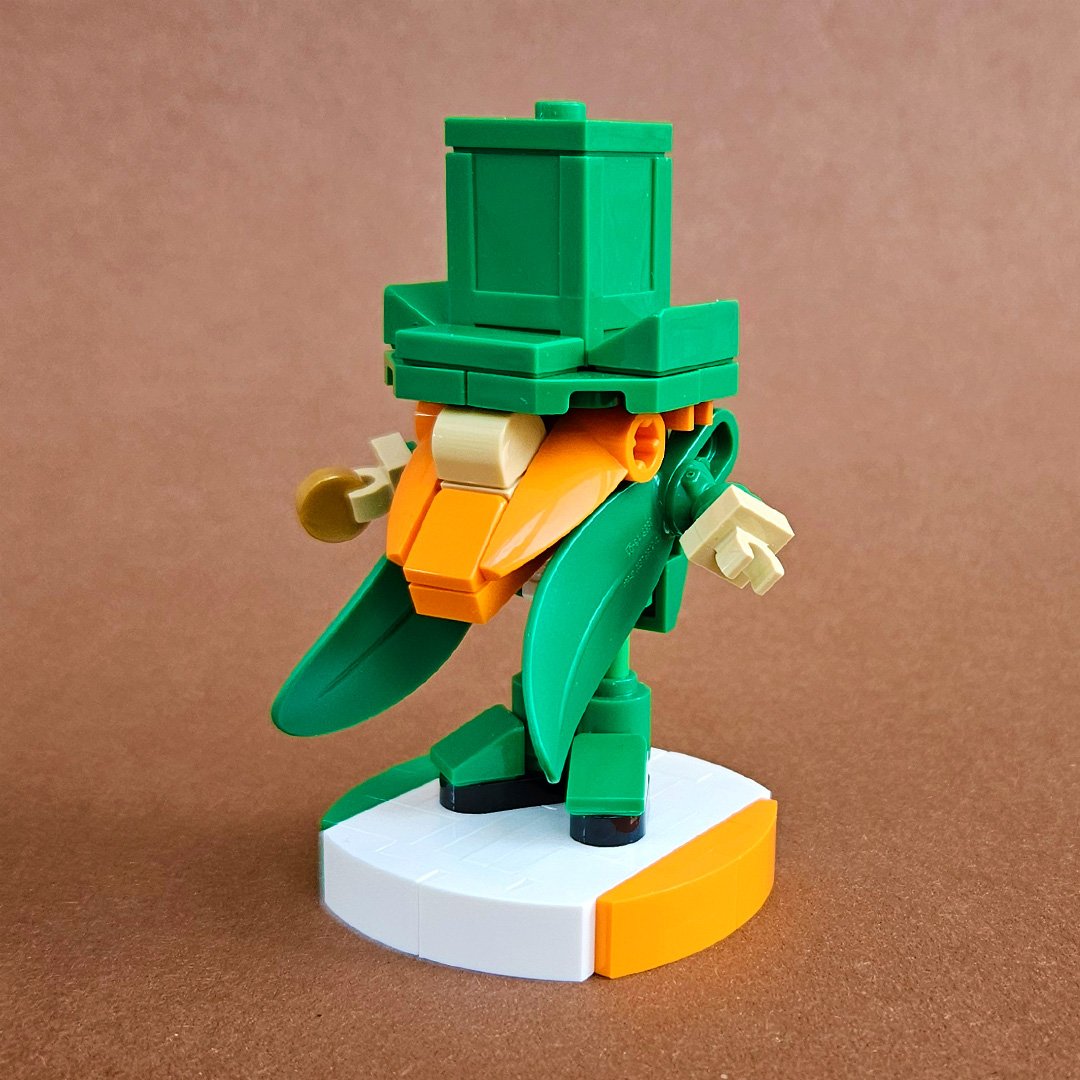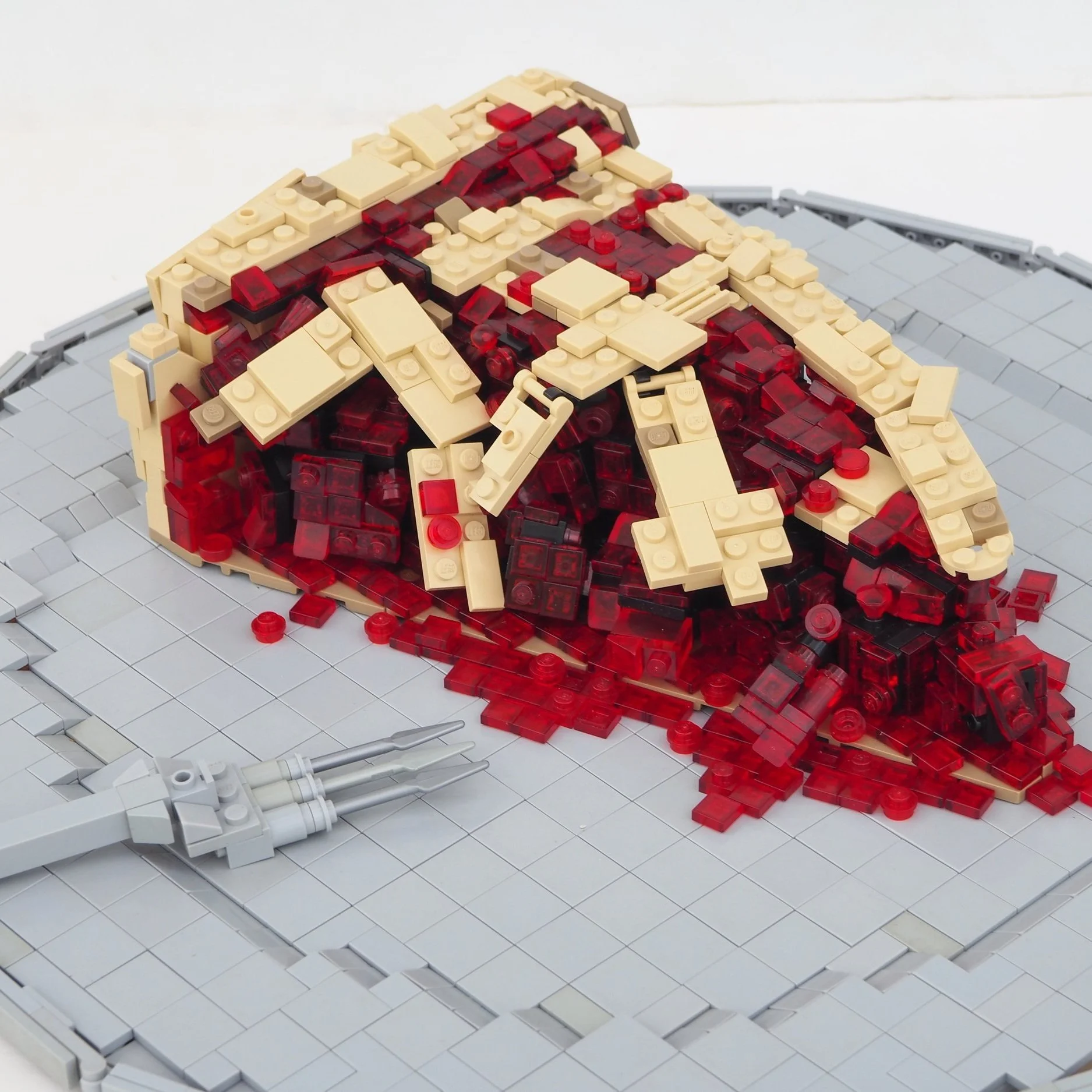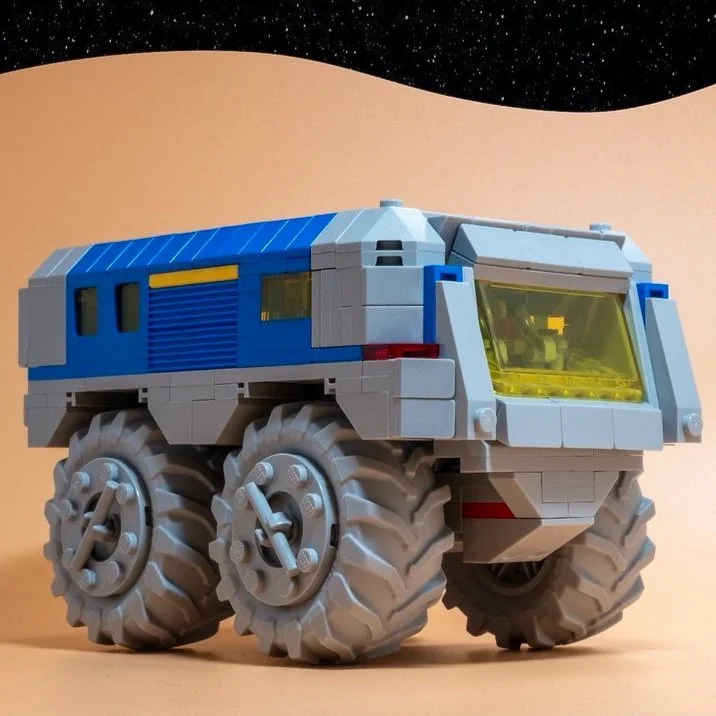Inside LEGO Masters Norway: A Chat with Brick Master Erik Legernes
/We previously shared a look at the contestants and the studio, so now it is time to chat with Brick Master Erik Legernes, this year’s judge for “LEGO Masters Norge”. Just so you know, he is the one to “blame” for many interesting LEGO themes and parts—but we will share “just” the most important ones. Vikings (but of course!), Exo-Force, Atlantis, Ninjago, Chima, Dimensions, mini-ball joints, stud shooters, Ninjago spinners… I think you get the idea!
Erik Legernes and Brick Nerdly
BrickNerd: First, I must just say thank you for all of your LEGO work! I believe that I can speak on behalf of all fans of the mentioned themes. Now, let’s get the ball rolling. Erik, can you introduce yourself and say something about your journey with LEGO bricks?
Erik: Thank you! Well, I see myself as a play inventor and my current title is Creative Director. My first 15 years in LEGO was all about inventing new play worlds. I started as a Designer in year 2000, when I worked on LEGO sports (Basketball, X-games and Football). Vikings theme was my first leading theme back in the days. After the launch of Exo-Force I was appointed as a Creative Director.
Leading a team of five designers, we have worked on LEGO home grown IPs called “the Big Bangs” – Atlantis, Ninjago, Chima and Nexo Knights – some of which you already mentioned. The Creative Director is responsible for leading the team and take decisions on new elements, design style of the models, play value and how the model gets presented on the box of the end product. However, with great talents that job is more of a dialogue.
BN: That is quite a journey! Are you able to, without valuing less of other themes, tell us which was/is your favourite theme that you were involved on?
Erik: Ninjago! That is my favourite. It was a great process and hard work with many talented colleagues. We had some amazing workshops with children’s groups that gave us a lot of good input for the direction of the whole theme.
BN: Assuming that you are not the only designer from Norway working at LEGO, did you have to draw straws to become a Brick Master? Did you consider that you will probably become a TV star?
Erik: Nothing like that, no (laughing). There are a few Norwegians here, but I got chosen for the interview. Mathew James Ashton (Vice President of Design) and Søren Dyrhøy (Danish Brick Master) mentioned me to the stakeholders. I have informed myself about how to approach this really, really difficult and important job. Then all bricks came into place and I am now the Brick Master at “LEGO Masters Norge”. I never considered becoming more well-known, no. I did want to learn more about the entertainment industry from this (inside) angle. And have fun!
BN: With being a Senior Designer for quite a few years now, working with colleagues on a daily basis, and basically being “a judge” at work, you are used to making difficult decisions. Would you say there is a big difference between the show and actual designer work?
Erik: As I already mentioned, I see myself as a play inventor. And for all these years working at LEGO as a Creative Director, my job is actually quite similar: Evaluate designers’ work, give feedback on new paths and directions, and run playtests in US and Germany. I have been responsible for design work on more than 200 models that have been launched.
When launching a new LEGO theme I want the models to be unique and never seen before, and with great play value. The innovation part never seen before is what I am looking for in the show. The contestants in LEGO masters need to impress and build unique and amazing models. But they also need to think smart and fit the current brief.
BN: Would you consider putting your LEGO team through a similar setup like LEGO Masters contestants?
Erik: Well, our actual workday is pretty similar. We build prototypes every day—mostly sketch models that indicate size and style direction. But I like your suggestion about doing a LEGO Masters addition – with parts and time constraints… I think I will do it!
BN: Let’s talk about the Brickroom. You have been in it many times. How would you rate it from your perspective? There are so many parts there, but there never can be enough LEGO, right?
Erik: The coolest thing about the Brickroom is how everything is presented in transparent boxes and all the minifigs built up. However, compared to our brick library in Billund, it is rather small. Just the minifigure section with parts on its own is 20 meters long.
BN: Speaking of parts, there must have been a few times that you were surprised by the way a build was presented during an episode. Did you see any “jaw-dropping” parts usage?
Erik: I must admit I did quite a few times. I have to be careful with this one—we don’t want to give away spoilers for the readers. One of them was the minifigure legs, which were used in the first episode by Ebbe and Joakim as a sail for the boat. The usage of the crab and plant to depict an expression on a face was pretty exciting to see too. The hose is a pretty versatile part, so it was used in many of the models. And … well, we should stop here! (laughing)
BN: Of course. We are familiar with designers trying to use their favourite part(s) in their designs. Although you are a concept designer and you evaluate sketch models, do you have a special part that is your favourite?
Erik: That is true, I don’t have a say in what parts are going to be in the models. But I do have a favourite piece. We call it “the plate 5mm ball joint”. It enables the designer to configure and put their models in twisted positions with a lot of dynamics. Also, curved and shaped elements help the models to get more of a “real look” to them. And let’s not forget all the bright and vibrant colours. I simply enjoy a model more if it is colourful.
BN: We can say without a doubt that contestants on the show have a LEGO fan background. Knowing “the brick” is important, have you seen designers come to LEGO with no specific fan background? Is being an AFOL a blessing or a curse for this show? For example, you could have a super-specific piece you need in your collection that was made in 2008 that fits a model you are building. But on LEGO Masters, you only have access to “just” the parts that are currently in production.
Erik: I have worked with great AFOLs over time, and I believe it is a strength to be in the community and learn from each other. AFOLs have also helped make LEGO to become a better brand by just listening to them. In terms of LEGO Masters, it is all about delivering the most unique, iconic and great models with a time constraint. This is so different from daily building life. To win the show, you need to adapt quickly to new challenges.
Judging moment
BN: As the show progressed, how would you say the teams evolved? It of course depends on the challenges—at the start they were not familiarized with the Brickroom that well and they were especially not used to be around cameras… Logic would say they might get more comfortable with each episode even with the added pressure of getting closer to becoming a LEGO Master.
Erik: I can point out three important things that I have noticed during the show. First: the speed and efficiency of the teams. I believe that the Norwegian teams have used the most bricks of all shows. Second: think fast/act fast. It is incredibly difficult to meet the requirements in the brief on such a short time. I don’t think people are aware how difficult the time aspect is. Third: uniqueness of the story and positioning of the models. I believe the contestants learned a lot from each other during the show, especially in storytelling and creating some of the iconic models.
Screening the contestants
BN: We have seen you come up to the contestants during their building time. When you comment on the builds in progress, how receptive are they?
Erik: They were thrilled to see me come up and take away some of their precious time! (laughing) All my comments would be to help them or give them a little push in a better direction. Of course, they did not need to comply to anything I said. Another thing that I have seen during the show is, sometimes the final scene and models weren’t “in place”. I would have put up the scene in more dramatic poses probably. But, all of the contestants were amazing and I enjoyed in every build they produced.
BN: Here is another tough one—looking at your colleagues and contestants from the show, do you see a future for any of them at The LEGO Group?
Erik: It was important for the show and contestant that I am as objective as possible. Over the years, I have hired a lot of designer to The LEGO Group. The latest is the best sketch builder I know, Luka Kapeter. It does not matter who you are or where you are from. Your portfolio is important—it is the building talent that makes you great.
“Strike a pose!”
BN: Is it possible to describe a perfect contestant? We can maybe help future applicants.
Erik: There are a lot of things that make “a perfect” contestant. The most important thing is to have fun! Something that I want to see from contestants is a uniqueness of the model. LEGO is bright and happy for me, so an artistic choice of colours.
Of course, NPU (nice part usage) adds to the playfulness of the model. And functions, they elevate ideas to the next level. Storytelling, with incorporating humour and a message that comes from it. And back to the first and most important – have fun!
BN: We’ve seen the trend of LEGO being perceived as a “boy’s toy” is now changing, thankfully. Do you have any words of encouragement to the FFOLs (female fans of LEGO) out there to apply for LEGO Masters?
Erik: I would be so happy if we could get more female contestants on LEGO Masters. I hope that I have helped with my interview to give some input about the show. If you have an interesting story that you want to tell, great building skills, you are innovative – there is no reason not to apply. You might end up in a team where you will complement your partner and create an awesome team. On top of it, this is a reality show and contestants have to want to share the awesome persons that they are.
BN: How excited are you to be soon going back to your daily routine in Billund? Are you enjoying your role as a judge?
Erik: I am really enjoying my role as Brick Master. It is not as difficult as I thought it would be (laughing). The worst thing as a judge is being responsible for stopping people´s dreams. I hope that I don’t stop anyone from being a great artist and that they keep on dreaming and building with LEGO bricks. The most important part I want to emphasize is that I want everyone to fall in love with building with LEGO bricks.
I hope people will enjoy the show because it is fun and that they will get impressed by all the things you can build. It is an amazing medium to use, to show your emotions, and to bring your ideas to life. But I also miss my team in Billund, prototypes and the existing free building experiment that I am working on, so I will be happy to get back to normal when the show ends.
BN: Thank you so much for taking some time out of your day to chat with BrickNerd!
What do you think would be the hardest part about being a LEGO Masters judge? Let us know in the comments below.
Do you want to help BrickNerd continue publishing articles like this one? Become a patron like Charlie Stephens, Marc & Liz Puleo, Paige Mueller, Rob Klingberg from Brickstuff, John & Joshua Hanlon from Beyond the Brick, and Megan Lum to show your support, get early access, exclusive swag and more.
























